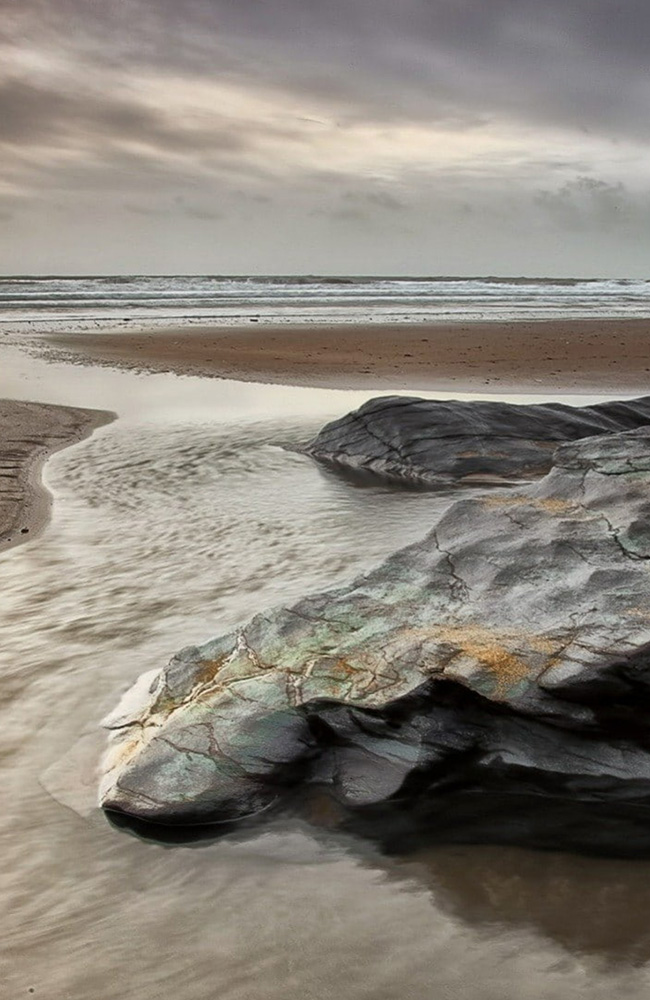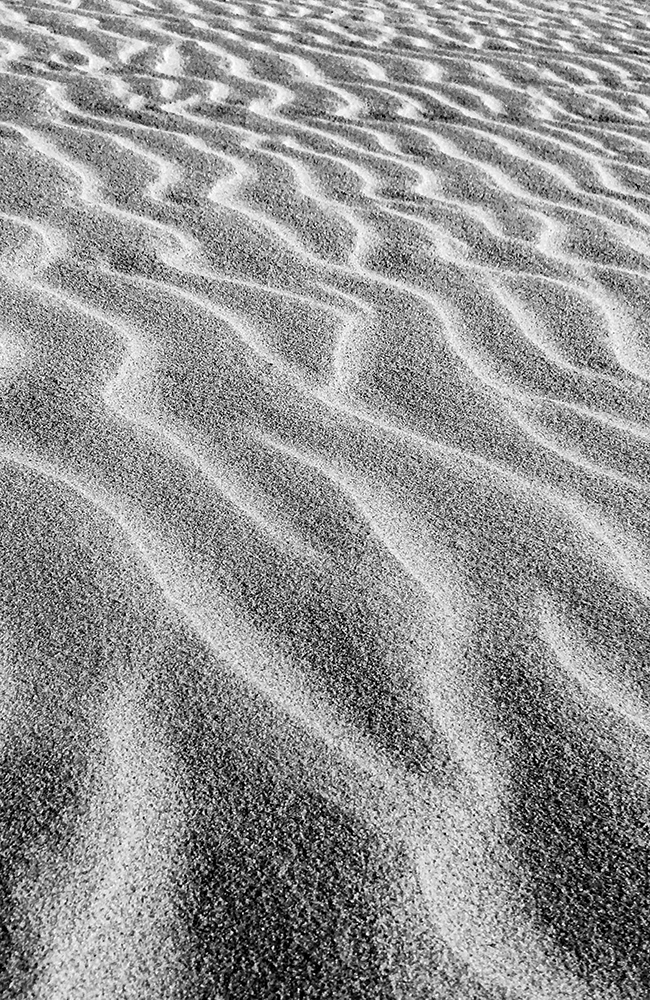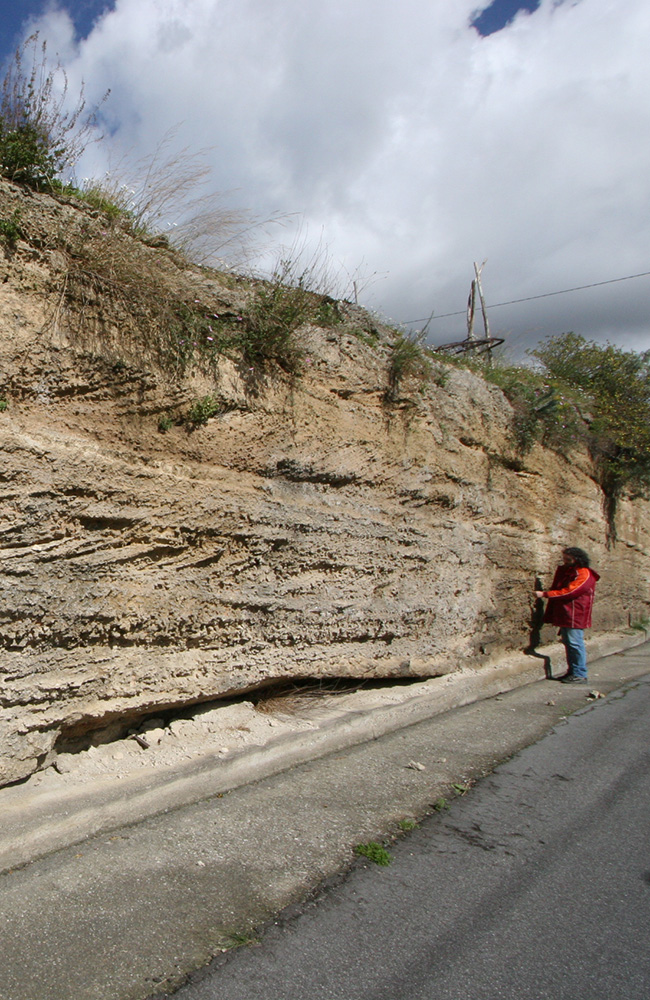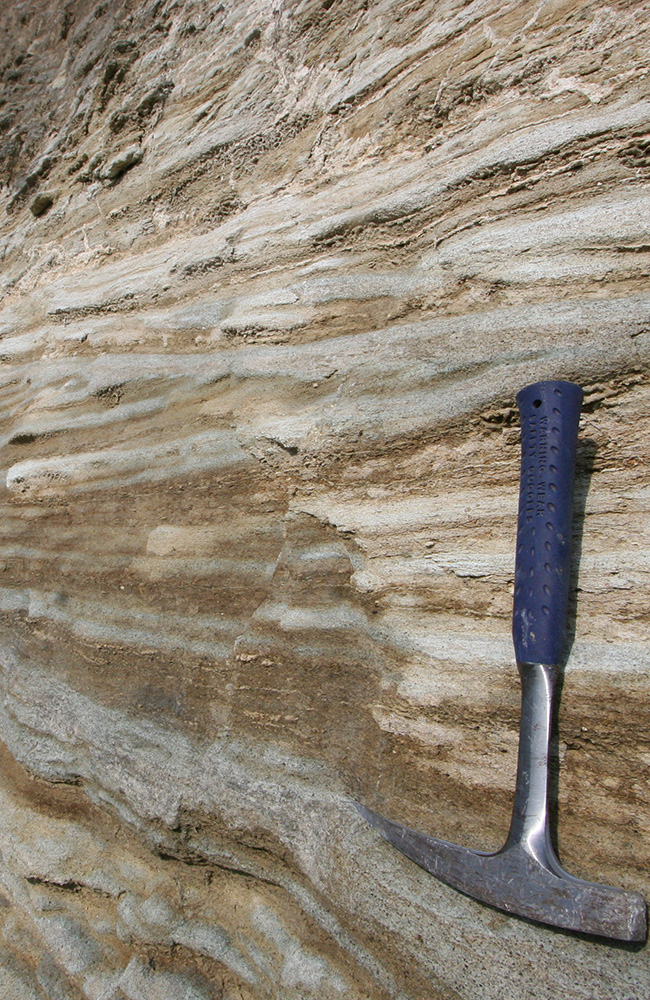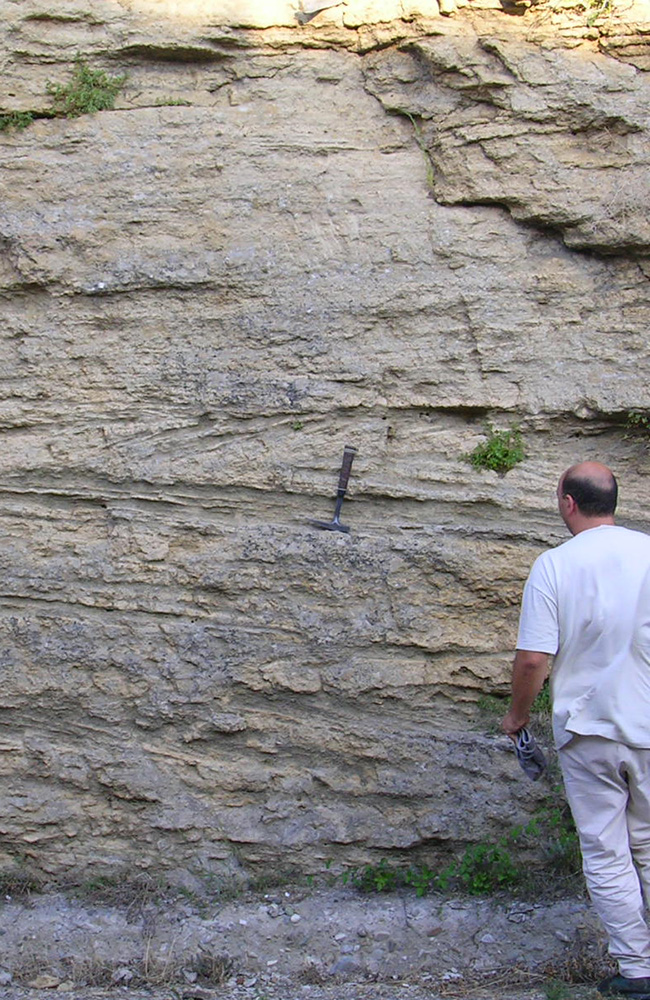
WELCOME TO THE OFFICIAL WEB PAGE OF THE
TIDALITES SCIENTIFIC GROUP
The Tidalites Group is a loose association of individuals who are interested in the dynamics of the water-level variations and water fluxes that are generated by tides, and also in the morphological features of modern and ancient sedimentary deposits that are produced by tidal currents. The community is represented by academia, research centers, government agencies, industry and other institutions, with scientific or professional interest in Tidal Dynamics and Sedimentology of modern and ancient environments.
Aims of the group
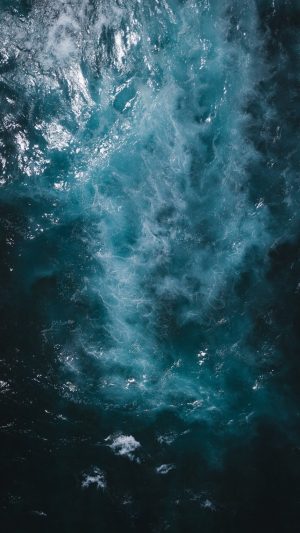
The principal aims of the Tidalites Scientific Group are to:
- coordinate the activities of that part of the scientific international community which operates in the field of Tidal Dynamics and Sedimentology;
- establish an informative and collaborative network among researchers and public and private institutions;
- support the organization of the Tidalites International Congress every four years and hosted by countries/research groups whose proposal is approved with advance by the Tidalites Steering Committee;
- promote additional scientific and educational activities among the international community, such as:
- endorse local research groups in the organization of scientific sessions focused on dedicated themes at the most relevant international congresses (e.g., IAS, SEPM, GSA, AGU, etc.), others than the official Tidalites meetings;
- organize periodical (e.g., annual) field-based courses and field trips aimed at visiting modern tide-dominated or tide-influenced environments and ancient Tidalites-bearing sedimentary successions;
- encourage periodical online seminars focused on scientific breakthroughs, novelties and attractive case studies;
- serve as reference for researchers at the beginning of their career, sharing research opportunities, such as scientific cruises and campaigns, field trips, courses, PhD, post-DOC positions and other relevant job opportunities;
- keep the community informed about any decisional activity of the Tidalites International Steering Committee;
- maintain updated the web portal and related pages on the major social networks;
- ensure a periodical newsletter to keep high the interest in the field of Tidal Dynamics and Sedimentology.
Info
HOW TO SUBSCRIBE
To join the Tidalites Scientific Group, please fill the subscription form. It’s free and provide constant updates on scientific meetings, field trips, courses, research projects or cruises, as well as on relevant publications and grants for early-career scientists
in the field of Tidal Dynamics and Sedimentology.
News
Tidalites 2025: a global wave of tidal science at the University of Liverpool
The 11th Congress on Tidal Dynamics and Sedimentology (TIDALITES) took...
> Read morePhD Opportunity – Tidal Sedimentology @ University of Aberdeen
Prof. Adrian J. Harley and Prof. John Howel are seeking a...
> Read moreSpecial Volume of The Depositional Record
Modern and ancient tidal sedimentary systems in the era of...
> Read moreMake an announcement
To post an announcement, please fill the form with a text including: name and institution of the proposer, title of the event, date and venue and a valid email address for contacts. The announcement will be firstly evaluated and, if approved, posted in the webpage

The congress of the TIDALITES international community has been held at various locations around the world about every four years for the last forty years, since its first edition in 1985.

Tidalites 2012
Caen, France
Tidalites 2008
Qingdao, China
Tidalites 2004
Copenhagen, Denmark
Tidalites 2000
Seoul, Korea
Tidalites 1996
Savannah, Georgia, USA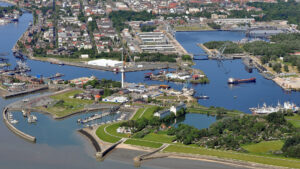
Tidalites 1992
Wilhelmshaven, Germany
Tidalites 1989
Calgary, Canada
Tidalites 1985
Utrecht, the Netherland
Proposal template
Host Application for the Next Tidalites International Conference on Tidal Dynamics and Sedimentology
Download, complete the sections and submit your proposal as a single PDF file, including any supporting images. Send your application to info@tidalites.com no later than one week before the upcoming Tidalites Conference. The proposals will be evaluated by the Tidalites International Steering Committee, and the selected host will be announced at the end of the conference

Tidalites International
Steering Committee
The Tidalites International Steering Committee is a board of member representing different countries of the World, having experience on the field of Tidal Dynamics and Tidal Sedimentology. The Committee designates the venue for the next international congresses based on the evaluation of proposals that are submitted during the current meetings after an official call. The Committee also indicates the board that manages the contents to be published on the webpage, social media and newsletters of the Tidalites Group.
Tidal Dynamics and Sedimentology
Tides are the result of the gravitational interaction of any two (or more) bodies (stars, planets and moons) and are a ubiquitous phenomenon of fundamental importance in astrophysics. The force exerted on a body is dependent on the mass of the bodies and their separation, and leads to deformation of the solid bodies as well as any fluid or gaseous envelop. The tidal force can be sufficient to cause deformation of the solid body that its interior melts, and in extreme cases rips the smaller body apart.
On the Earth, tides of the solid Earth (“Earth tides”) are minor, whereas the Sun and Moon generate appreciable tides in the ocean and atmosphere. The particular nature of the tides in the ocean are complex with many different periods and vary greatly from place to place because of different responses of the various tidal periods to the regional and local geomorphology.
As a consequence of these phenomena, loose sediments can be transported by the water movements generated by tides, and arranged into a variety of bedforms in a multitude of environments.

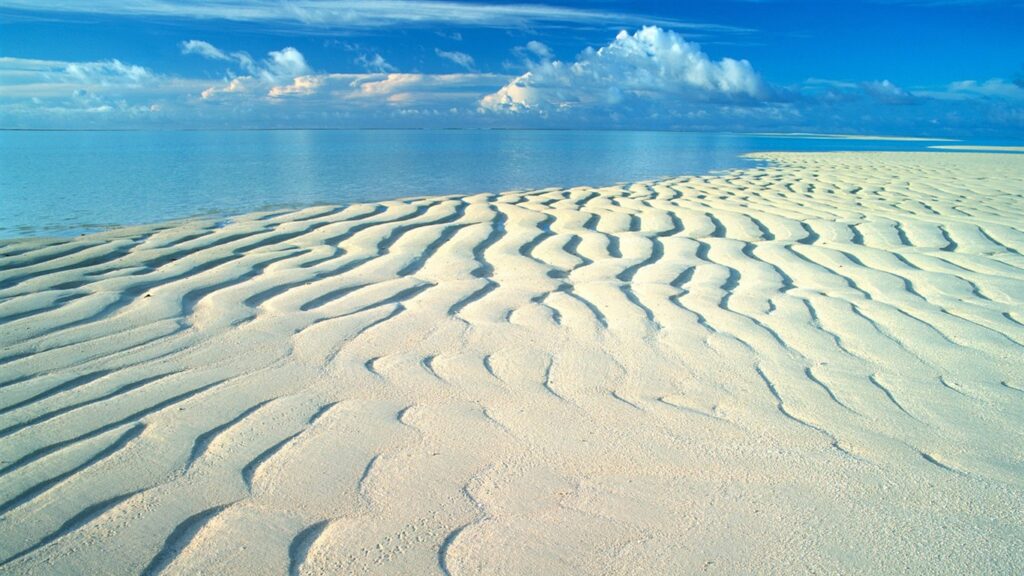
01.
Tidal water movement
These processes have significant impacts throughout the world’s oceans and seas, from abyssal depths to shallow coastal areas, where the relevance to human society can be dramatic.
Tidal water movements influence or control the dispersal of nutrients and pollutants, and commonly determine the circulation of water masses that influence the nature of biologic communities and their environmental health.
Sediment movement controls the evolution of seabed and shoreline morphology that can have complex impacts on the operation of harbors and the stability of coastal infrastructures.
02.
Tidal sedimentary deposits
Tidal sedimentary deposits ranging in age from the Precambrian to the present are an important component of the geologic record of Earth-surface processes and can be host to significant hydrocarbon accumulations.
Thus, the study of tidal dynamics and the sedimentology of the sediment bodies and deposits that they generate is of great importance, with relevance to many diverse fields. The objective of this “Tidalites” group is to act as a meeting place for researchers with an interest in any aspect of tides and their environmental impact and geological record. While the main focus is on water tides on the Earth, tides in the solid earth or atmosphere, or even on other planets, are not excluded.
03.
Tidal Sedimentology
The Tidal Sedimentology is that subdiscipline of the Earth Sciences which focuses on the analysis of the sedimentary products of tides on the Earth. Tidal currents, generated by the propagation of tidal waves on open oceans, affect coastal zones with different energy and velocity, being able to produce erosion of unconsolidated sediment at the sea bottom, transport of clastic particles on the shelves and also accumulation of sediments in specific deposits, once these currents lose their residual energy and transport capacity. These accumulations may result in a variety of characteristic facies, whose physical and chemical attributes observed in modern environments may serve as diagnostic features to recognize ancient tidal deposits in the rock record.
The Meaning
What is a Tidalite?
The term tidalites designates every sedimentary deposit accumulated by water flows, whose movement is generated predominantly by tidal currents. Originally referred to tidal rhythmites, i.e., sedimentary successions exhibiting a marked rhythmical lamination due to the alternation of flood and ebb tidal currents in intertidal zones of coastal settings, the term tidalites has then been used for a broader variety of tidal sedimentary accumulations, also produced in subtidal zones of marginal-marine settings, shelves and deeper marine environments. Continental (lacustrine) tidalites are also known, although less documented with respect to their marine counterparts.
In some cases, vertically accreting, mud-bearing “tidal rhythmites” or laterally accreting, sandy tidal bundles contain clear evidence of tidal periodicity, perhaps with evidence of reversals in current direction. However, because of the complexity of most sedimentary environments, tidal signatures are commonly interspersed with deposits formed by other processes, such as waves or river currents, with the role of tides ranging from dominant to minor.
There is no commonly accepted definition of the minimum content of tidally deposited sediment in a succession at which the term “tidalite” is no longer applicable. Composition is not part of the definition, and the term applies equally to siliciclastic, carbonate and mixed deposits.
